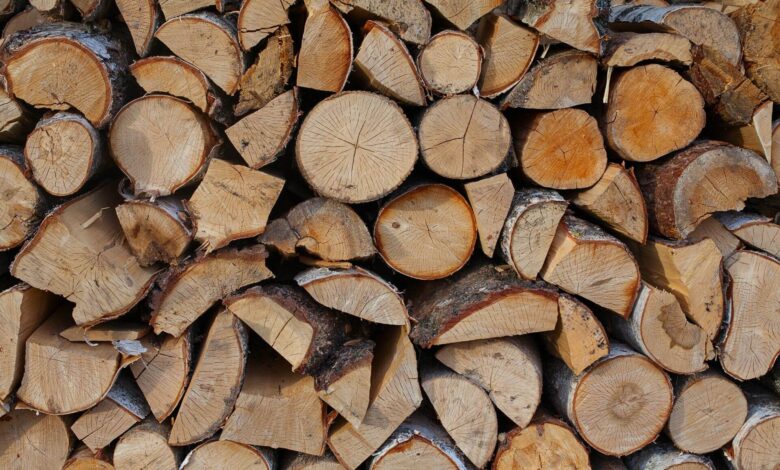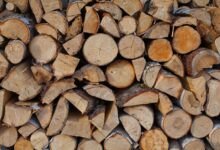Logs: Everything You Need to Know About This Essential Resource

Logs are more than just pieces of wood that you stack up for a cozy fire. They play an important role in various industries and everyday life. From heating homes to building furniture, logs are an essential resource with a rich history and a wide range of uses. In this logs article, we will explore their many functions, the process of harvesting them, and the environmental considerations surrounding their use.
In this comprehensive guide, we’ll cover everything you need to know about logs, showcasing their versatility, sustainability, and the crucial role they play in modern life. So, let’s dive in and see why logs matter more than you might think.
What Are Logs?
At its most basic level, a log is a portion of a tree trunk or large branch that has been cut down. It’s typically cylindrical in shape and can vary greatly in size depending on the type of tree and the intended use. Logs are often used in their raw form for purposes like firewood, or they can be processed into lumber for construction and manufacturing.
The importance of logs goes beyond their material value. They represent a renewable resource when harvested responsibly, playing a key role in industries from construction to agriculture, and even in environmental conservation.
Uses of Logs: From Heating to Construction
One of the most well-known uses for logs is as firewood. For centuries, humans have relied on logs as a primary source of heat, whether for cooking or warming their homes. But beyond firewood, logs have a wide range of applications:
- Construction: Logs are used in the construction of homes, cabins, and buildings, especially in log cabin designs.
- Furniture: High-quality logs are crafted into fine furniture pieces, from tables to chairs.
- Paper Production: Logs are processed into pulp for paper, which is used globally.
- Landscaping: Logs can be used for outdoor projects such as garden edging, benches, or rustic pathways.
- Agriculture: In farming, logs can be used for fencing and as supports in orchards and vineyards.
- Energy: In some regions, logs are converted into biomass energy, providing a renewable energy source.
Each of these uses illustrates just how versatile and essential logs are across a variety of sectors.
Types of Logs: A Variety of Wood for Different Needs
Not all logs are created equal. Different types of trees provide different qualities of wood, which determine how they’ll be used. Here’s a look at some of the most common types of logs and their primary uses:
- Oak Logs: Known for their strength and durability, oak logs are often used in furniture and construction. They also make excellent firewood due to their slow burn.
- Pine Logs: Pine is softer and more readily available, making it a popular choice for construction lumber and paper production.
- Cedar Logs: Cedar has natural resistance to insects and decay, making it ideal for outdoor projects like fencing and decks.
- Maple Logs: Maple logs are highly valued for their fine grain, often used in making furniture and flooring.
- Birch Logs: These are commonly used in paper production and as firewood in colder climates.
Understanding the different types of logs helps consumers and industries choose the right wood for their specific needs.
Harvesting Logs: The Process from Forest to Use
The journey of a log starts in the forest, and the process of getting logs from trees to usable materials is more complex than you might think. Here’s a basic overview of the process:
1. Tree Selection
Foresters carefully choose which trees to cut based on factors like age, size, and overall forest health. Sustainable forestry practices ensure that trees are replanted and that logging doesn’t deplete the ecosystem.
2. Felling the Trees
Using chainsaws or specialized equipment, loggers cut down the selected trees, ensuring safety and precision. This is often done during specific seasons to minimize damage to the surrounding forest.
3. Transporting the Logs
Once the trees are cut, the logs are transported to sawmills or processing facilities. Depending on the terrain, they may be moved by trucks, or in some cases, floated down rivers.
4. Processing the Logs
At the mill, logs are cut into lumber, peeled for veneer, or chipped for pulp. The processing method depends on the intended use of the wood.
5. Distribution
Finally, the processed logs or wood products are distributed to various industries for use in construction, manufacturing, and energy production.
This entire process highlights the careful planning and precision involved in making sure logs are used efficiently and sustainably.
The Role of Logs in Sustainability
In today’s world, sustainability is more important than ever, and logs play a key role in the discussion around renewable resources. When harvested responsibly, logs are a renewable resource that can contribute to a sustainable future.
Sustainable Logging Practices:
- Selective Harvesting: Only mature trees are cut, and younger trees are left to grow, maintaining the forest ecosystem.
- Replanting Trees: After logging, new trees are planted to replace the ones that were harvested.
- Reducing Waste: Modern logging techniques aim to minimize waste by using as much of the tree as possible, including branches and wood chips for other products.
Environmental Benefits:
- Carbon Sequestration: Trees absorb carbon dioxide as they grow, helping to reduce the levels of CO2 in the atmosphere.
- Habitat Conservation: Well-managed forests provide habitat for wildlife while allowing for responsible harvesting of logs.
Sustainable logging is crucial to ensuring that future generations can continue to benefit from the versatile uses of logs without harming the environment.
Firewood: The Timeless Use of Logs
For thousands of years, humans have relied on logs as a source of heat. Even in modern times, logs remain a popular choice for firewood, especially in rural areas or for recreational use in fireplaces and campfires. The slow, steady burn of logs like oak and maple makes them ideal for keeping warm during the cold months.
To get the best firewood, it’s important to season the logs. Seasoning means drying out the wood over time to reduce its moisture content, which helps the wood burn more efficiently and produce less smoke.
Tips for Choosing the Best Firewood:
- Hardwoods vs. Softwoods: Hardwoods like oak and maple burn longer and hotter, while softwoods like pine ignite easily but burn faster.
- Dryness: Well-seasoned wood should have a moisture content of 20% or less.
- Size: Cut the logs into manageable pieces that fit into your fireplace or stove.
Whether you’re building a campfire or heating your home, knowing which logs to use can make a big difference in efficiency and warmth.
Logs in Construction: Building Strong Foundations
Logs have been used in construction for centuries, from ancient log cabins to modern log homes. Today, logs are still a popular choice for certain types of buildings due to their strength, durability, and natural beauty.
Log homes are not only aesthetically pleasing, but they are also highly energy-efficient. The natural insulation properties of logs help to regulate temperatures, keeping homes warm in the winter and cool in the summer.
Benefits of Using Logs in Construction:
- Durability: Logs are incredibly strong and can withstand harsh weather conditions.
- Energy Efficiency: The natural insulation of wood helps to reduce energy costs.
- Aesthetics: The rustic charm of a log home appeals to many homeowners.
When treated properly, logs can last for decades or even centuries, making them a timeless building material.
Environmental Considerations: Logging and Conservation
While logs provide a renewable resource, it’s essential to balance logging with environmental conservation. Deforestation, poor logging practices, and overharvesting can have devastating effects on ecosystems, wildlife, and climate.
However, sustainable forestry practices can mitigate these effects. Many countries have laws in place to ensure that logging companies follow guidelines for forest management, ensuring that logs are harvested in a way that preserves biodiversity and prevents long-term damage to forests.
The Future of Logs: Innovation and Sustainability
As the world moves towards more sustainable practices, the future of logs looks bright. Innovations in logging technology, combined with a growing awareness of environmental issues, are paving the way for more efficient and eco-friendly ways to use logs.
New methods of processing wood for energy, such as turning logs into biomass fuel, offer renewable energy solutions. At the same time, the use of logs in sustainable construction continues to grow, as architects and builders recognize the environmental benefits of using natural materials.
| Type of Log | Primary Use | Key Benefits |
|---|---|---|
| Oak | Furniture, Firewood | Durable, long-lasting, slow burn |
| Pine | Construction, Paper Production | Lightweight, easily processed |
| Cedar | Outdoor projects, Fencing | Resistant to decay and insects |
| Maple | Flooring, Furniture | Fine grain, high strength |
| Birch | Paper, Firewood | Common and versatile |
Conclusion: Logs, A Timeless Resource
In conclusion, logs are more than just pieces of wood. They are a valuable resource with a wide range of uses, from heating our homes to building strong foundations for construction. As we’ve explored in this logs article, sustainable practices and innovation are helping to ensure that logs remain a renewable resource for generations to come.
By understanding the many ways logs are used and the
importance of responsible logging, we can appreciate the true value they bring to our lives. Whether you’re chopping firewood for a cozy night by the fire or marveling at a log cabin, logs will continue to be an essential part of human life.

